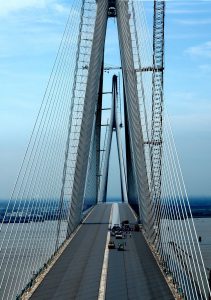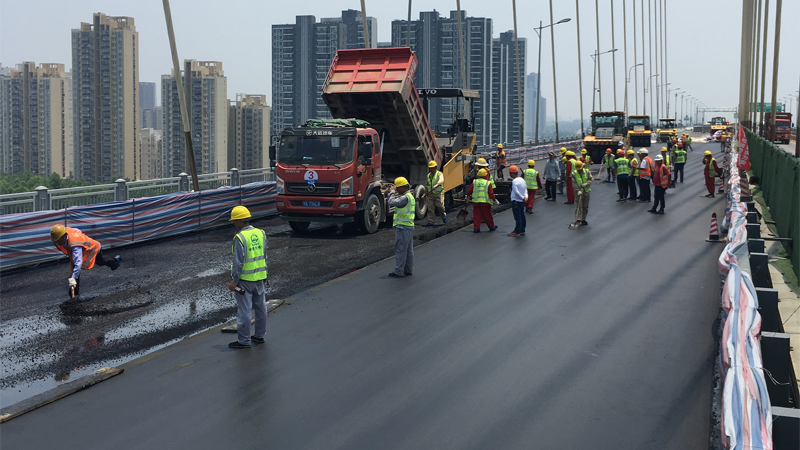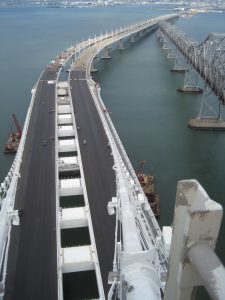Epoxy Asphalt Features
Epoxy Asphalt’s most common applications are: 1) as a thin overlay (3/4 to 2 inch thickness) lightweight wear course for repair, replacement or new construction and 2) as a paving surface for orthotropic steel decks* where toughness and elastic composite behavior are critical. Several bridges have used Epoxy Asphalt chip seals as temporary wear surfaces during in-service bridge deck replacements such as the new deck segments recently installed on the Macdonald Bridge in Halifax, Nova Scotia.
A newer use of Epoxy Asphalt is as an extremely durable binder for open graded permeable pavements. Following is the link for a new video for the open graded use in NZ: NZ video.

Sutong bridge paving train
Other benefits include:
- Low Porosity Prevents Deck Corrosion
- Superior Substrate Adhesion (Pavement Stays Bonded at High Ambient Temperatures)
- Extreme Durability and Flexibility
- Can be Installed as Thin Overlay (3/4″) if Added Weight is Critical
- Roadway Open After 2-4 Hours (Light Traffic)
- 3-6 Times Stronger than Conventional Asphalt Concrete
- Non-Melting Binder; Pavement Won’T Rut or Shove, Even with Heavily Overloaded Trucks
- Binder Won’t Oxidize and Harden Upon Aging Like Regular Asphalt
- Lightweight Aggregate ok in Mix Design if Very Low Pavement Weight is Needed
- Negligible Cure Shrinkage
- Bond (Tack) Coat and Binder Will Not Melt and are Extremely Chemical Resistant
- Installed with Conventional Asphalt Paving Equipment


.jpg)
